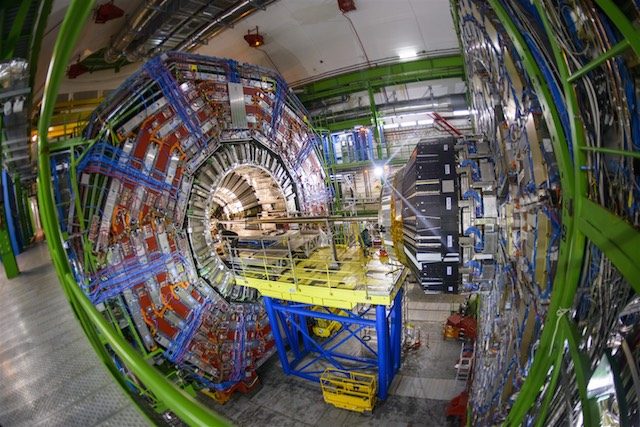SUMMARY
This is AI generated summarization, which may have errors. For context, always refer to the full article.

PARIS, France – Scientists on Wednesday, May 13, said that after a nearly 3-decade bid they had detected a telltale change in a sub-atomic particle, further backing a key theory about the Universe.
Researchers at the world’s biggest particle collider said they had observed an extremely rare event – the decay of the neutral B meson into a pair of muons, the heavy cousins of electrons.
The results provide further support for the so-called Standard Model, the conceptual framework for the particles and forces that constitute the cosmos, they said in the journal Nature.
Neutral B mesons are unstable composites of two kinds of particles called quarks, bound by the “strong” force.
Their decay into muons is predicted under the Standard Model. But getting evidence to confirm the prediction has been a puzzler since the mid-1980s.
For one thing, neutral B mesons themselves are produced in extreme conditions – in particle colliders or in cosmic-ray interactions, for instance – which makes them hard or very costly to study.
And the transition into muons only occurs about four times in every billion “decays.”
Rival teams at CERN’s Large Hadron Collider (LHC) – the massive underground lab near Geneva that straddles the Franco-Swiss border – worked separately on detecting the elusive event.
They released individual results in July 2013, but, separately, the data batches fell just short of the demanding threshold of accuracy for claiming a discovery.
Their combined analysis, now published in the benchmark peer-reviewed science journal, “easily exceeds this requirement,” the European Organization for Nuclear Research (CERN) said in a statement.
The paper said the experiments showed that Standard Model, which dates to the 1970s, had cleared another hurdle but others lay ahead.
“In the course of the past few decades, the Standard Model has passed critical tests derived from experiment, but it does not address some profound questions about the nature of the Universe,” the authors said.
The framework does not, for instance, explain dark matter, the stuff that composes nearly 85% of the mass in the cosmos and is currently only detectable through its gravitational effect on visible matter.
The quest to understand dark matter is one of the priorities of the current work program at the LHC, which began last month after a two-year upgrade.
The collider comprises a ring-shaped tunnel where proton beams are whizzed around in opposite directions at speeds approaching that of light.
At four locations in the tunnel, powerful magnets bend the beams, bringing them together so that some of the protons smash together – a brief, intense collision.
The sub-atomic rubble that results is then analyzed to look for novel particles or clues about known ones.
In 2012, the LHC confirmed the Higgs Boson, the long-sought Standard Model particle that confers mass.
It earned the 2013 Nobel physics prize for two of the scientists who back in 1964 had theorized the boson’s existence. – Rappler.com
Add a comment
How does this make you feel?
There are no comments yet. Add your comment to start the conversation.